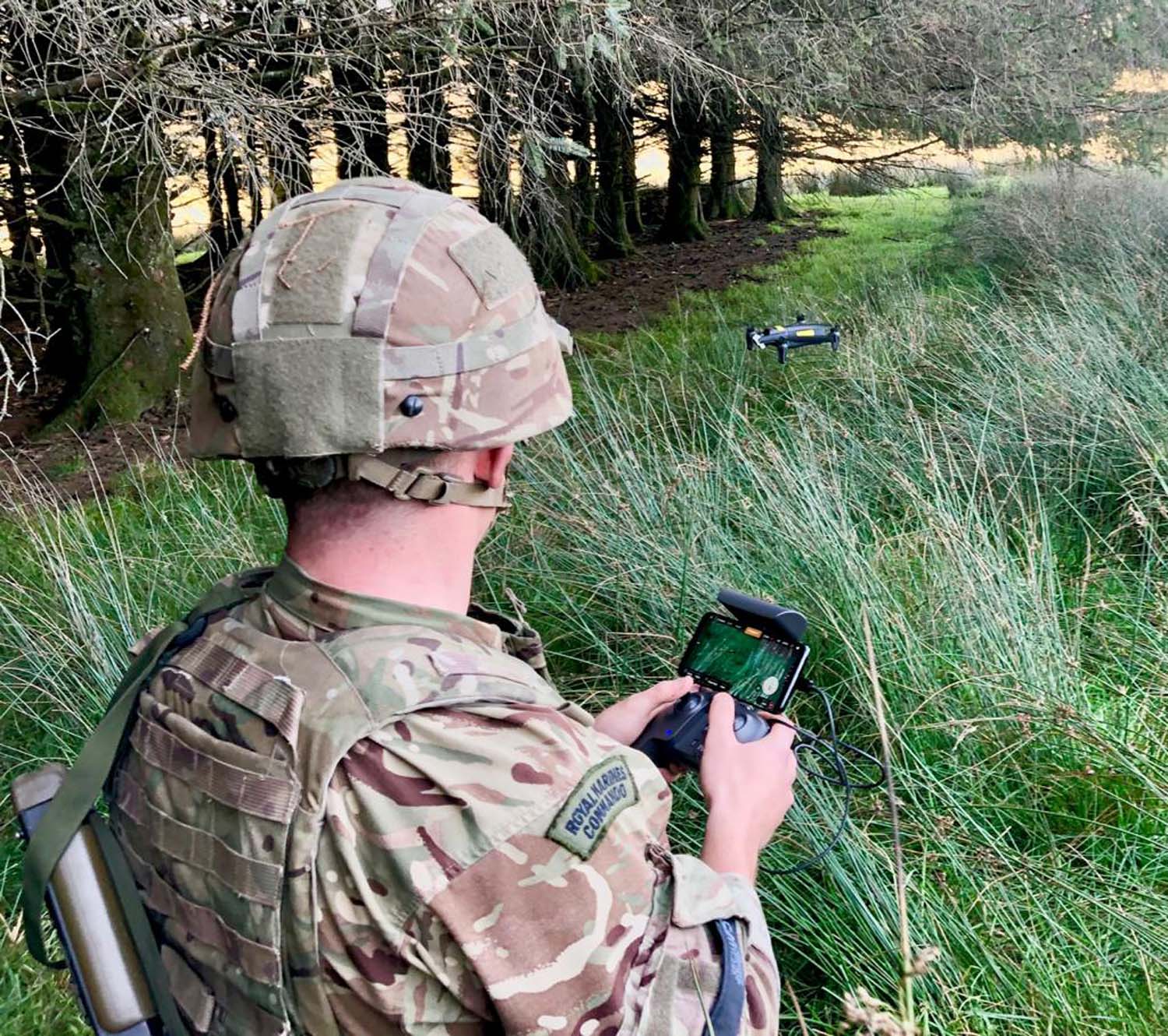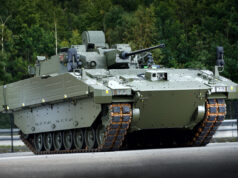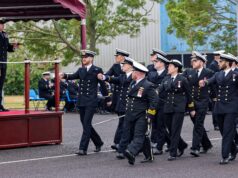Royal Marines have used small drones to bring an edge to patrol training missions in Wales as they build up to Arctic deployment, according to the Ministry of Defence.
The MoD say that Mortar Troop of Arbroath-based 45 Commando took on a five-day tactical exercise that saw them tested in Future Commando Force small-team tactics in various environments, from urban zones to woodlands.

“The commandos used small remotely piloted aerial systems – in other words, drones – to aid decisions made on the patrols at the Sennybridge Training Area in the Brecon Beacons. The drones fed real-time footage back to their Android Tactical Assault Kit (ATAK), which is a tablet that provides useful information for navigation and situational awareness. This gave the commandos better foresight and a decisive edge when it came to reconnaissance and patrolling.”
Colour Sergeant Jonathan Mosley, of Mortar Troop, was quoted as saying:
“This has been the first opportunity for the marines to incorporate drone and ATAK navigation devices into their training. The response was very good. I’m really pleased with what we achieved.”
It is understood that the exercise was designed to push the marines in essential patrol skills, but also to see the impact of intertwining those traditional skills with the new pieces of kit. During two hours of preparation time, the commandos used the tablets to study areas of interest, targeting locations and assessing the lay of the land using footage gathered by their drones.













Looking at the above picture, it never fails to amaze me how long it took the powers that be, to knock out a Helmet where the front rim was cut away in which to allow the man wearing it to fire his weapon in the prone position comfortably. Hands up those here who always had to lift their helmet up from the front during their APWT when Horizontal after hearing the words:
“Watch and shoot, watch and shoot”
Yep, especially when wearing Osprey and the back plate pushes up the back of the helmet.
Once went to get a magazine out of my ammo pouch mid drills and my ‘mate’ had wrapped a turd up in a sandwich bag and slipped in there while I was sorting my admin out. Bag bust when I grabbed it. Nightmare. Thought you’d appreciate the story.
We found a dead crane bird when on foot patrol near Kajaki. I placed it in the Boss’s Bergen when he was digging a hole for a No2. It was absolutely stinking after being in the bush for five days. He eventually saw the funny side to it! Had to get a monster round of beers in when we got to Cypress.
To be fair though it made it easy to rest the front rim on the top of the SUSAT and let the chin strap do the work while laid there in absolute clip. Swings and roundabouts! 🙂
I am curious if these type of drones would be effective in a real conflict situation where the troops could be fighting for days at a time with no access to power, and where the enemy is not stationary and so situational awareness is only valid for short periods at a time before it’s outdated.
Steve, I think the best example of the use in real combat is to take a look at the conflict in Ukraine. Both sides have been using small “toy like ” drones for years now. Originally a lot of these were toy drones bought from Ebay etc. So their batteries would only last 30 minutes or so. I know that the Ukrainians have been buying both lots of batteries, but also solar power packs used to charge the batteries.
The fighting has pretty much stalemated into an almost trench warfare like combat. The drones that are being used have evolved from the toy versions. Ukraine has now developed there own drone design and manufacturing companies to the point where they export them World wide. It was this conflict that first saw the use of both suicide and grenade dropping drones. That was then copied and used in Syria and Iraq. Through necessity, Ukraine is at the forefront of small drone technology. What you see our RM lads using, is us playing catch-up. These drones are what are required by units now, every platoon should have one. They make such a difference. The Desert Hawk proved its worth in Afghan and we are seeing more use of the nanocopter for house searching. The main issue with using drones is that you need both ands to operate them, i.e. not controlling your weapon. So when doing house clearing etc, you are essentially a man down. If the drones were more automated and the operator had assisted reality eyewear, it would make life a lot easier. mounted to their helmet, with some sort of gesture control
Well Steve you can allways find a situation to suit your argument. The drones would obviously have a use in survey , reconnoitering et al So why not
For sure, but as with a lot of tech its hard to know if the tech has been designed to find a solution for an existing problem or not. A lot of tech gets launched without a need/’problem looking to be solved’, and so crashes and burns after a bit, even though they get rave reviews etc.
My initial though when i read this article was to the death of the para captain in the falklands, which has generally been put down to lack of awareness of enemy positions and thinking they would have needed the drones a lot during that conflict and that would sap through batteries fast.
I guess it comes down to how big / heavy the batteries are and how long each lasts.
Solar power doesn’t appear to be viable, as it is really really slow at charging batteries, constant redeployment would mean they would hit this.
You make a fair point, but it’s also worth noting that all of the comms and network kit that we’re carrying and will be carrying are also pretty power hungry. Even a lot of the weapons optics that we use now require batteries etc.
It’s not a 100% solution, but I believe that most of our vehicles these days have charging points for all of this stuff, which effectively turns them into generators. Obviously, they still need fuel, but it simplifies logistics a bit.
Charging and performance of lithium batteries at low temp’s can cause problems !